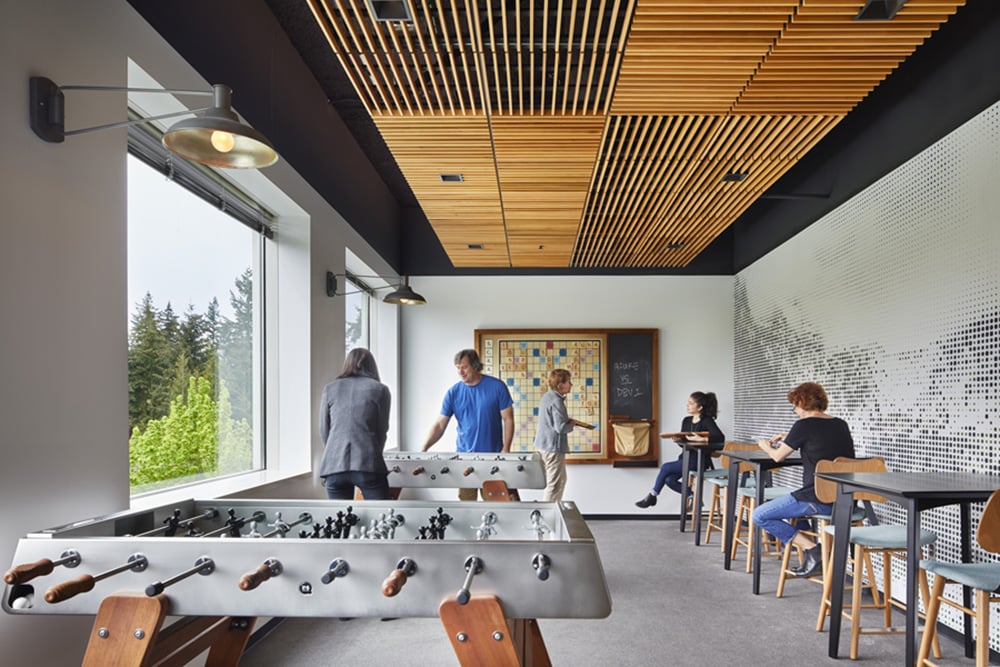
November 15, 2017
Workplace Wellness: From Office to Home
A Q&A with ZGF Architects on how workplace wellness is bringing residential elements into the office.
For the past three years, Metropolis’s director of design innovation, Susan S. Szenasy has led Think Tank, a series of conversations on human-centered design. On August 16, 2017, she visited the Seattle-based firm ZGF Architects to discuss designing for workplace wellness. What follows is a transcript of the conversation, edited for clarity by S.T. White.
Susan S. Szenasy, director of design innovation, Metropolis (SSS): Ninety percent of our lives are spent indoors, mostly between work and home. Today, we’d like to share experiences about designing places that accommodate our changing senses of health and balance. Microsoft has had a wellness program since 2007. How many employees are on the Microsoft campus and how does the program work?
Ruta Patil, workplace strategist, Microsoft (RP): We have 120 buildings and 45,000 people. The program used to be called the Workplace Advantage and now we call it the Intelligent Workplace. The company started in 1975 and moved to Redmond in 1979. The original promise used to be that every worker got a door, which meant you got an office, but the space is very different now. Culture enhancement happens quite a bit when the model of the physical space changes. Democratizing daylight and views is really important, so that they’re not rewards for seniority while sitting in darkness is the norm for everyone else. For the longest time, we focused on the business aspect of workplace design, like productivity and profits. Then, we realized that the more we think about employees’ overall well-being, productivity goes up as a result.
SSS: Most of the employees are software engineers. How does the campus reflect their particular needs and ways they work?
RP: The average person is very smart, analytical, and data-based. When we tell them we can’t do something or need to, they expect us to prove it with a presentation and numbers. They take immense pride in being geeks, which has its own subculture and personality. They are very curious, and actually analog methods of working are alive and well. We can never provide enough whiteboards, post-its, and large sheets of paper to map out the process. We try to provide a space that represents their sense of humor and culture.
SSS: How do you express the search for a healthier environment through interior design?
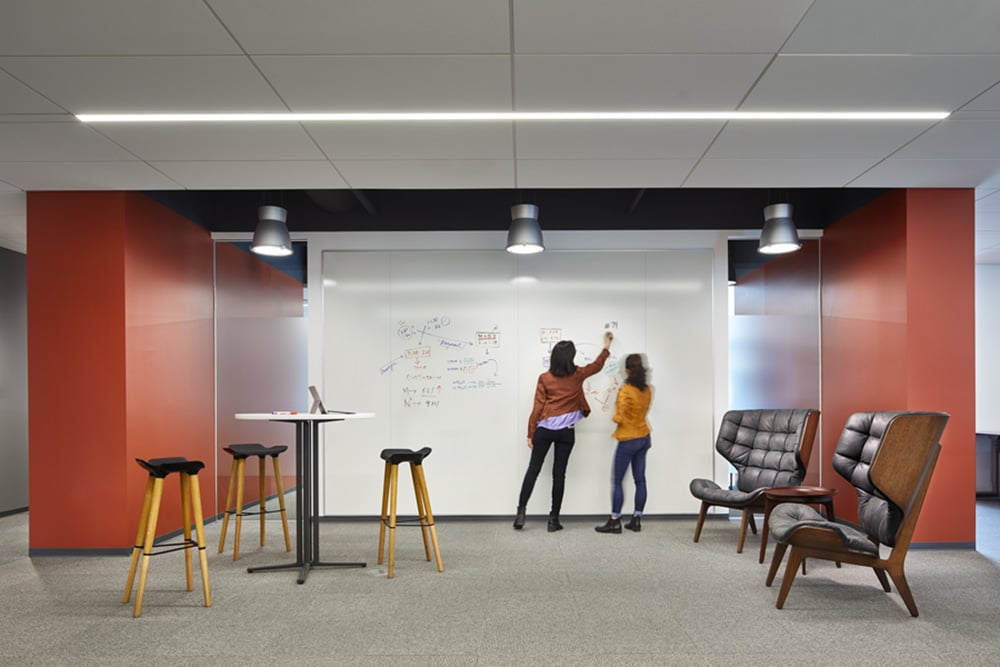
Camilla Watson, interior designer, ZGF Architects (CW): We create frameworks for self-expression. We provide the backdrop and users decide how they want to use the space, so we provide a variety of spaces in order to engage a diverse range of working styles and personality types. We also concentrate on the indoor outdoor connection, bringing people out of their silos and into public spaces. We provide outdoor conference spaces, and bring food trucks on campus to instigate social engagement. The emphasis on social spaces goes hand in hand with health and productivity.
SSS: Has Seattle taken steps in this direction so that the children of Microsoft employees, for example, also benefit from wellness design?
Heidi Bullinga, architect and urban planner, ZGF Architects (HB): On the city wide scale, there are neighborhood greenways so that kids can bike and walk to school. The bicycle lane network is being completed. Plus, there is an effort to build what’s called “the missing middle.” A lot of land is zoned for single-family use, and there are condos downtown, but where are the apartment buildings and townhouses between five and twelve stories?
Recently, we reviewed a feasibility study for a 13-acre site which is a Lowe’s right now. That area is part of a dependent fabric with parking lots and big box buildings. Plunked down in the middle is a light rail station. The question is, “Why hasn’t the area flipped?” A huge impediment has to be Rainier Avenue, which has six lanes of traffic and 35,000 vehicle trips per day. The connection from the light rail station to the site isn’t strong enough. Making the bicycle lane and pedestrian connections stronger will help realize the potential of that site.
The city has great assets, like the Mountain to Sound Greenway and a biking trail around Lake Washington. Connecting neighborhoods to those areas makes the whole city more livable. One of our big wins was convincing the city to add bike lanes despite the fixed-width of the street, even though it reduces how many vehicles can pass through.
We also evaluate large-scale district projects to find the right balance of jobs to housing. Energy efficiency is one benefit, with district heating and cooling systems. Plus, living near work is fantastic. One study shows that cutting commutes by an hour is worth, on average, $40,000 to the individual commuter.
SSS: Can you talk about some city programs that will benefit the Seattle community?
Vinita Goyal, urban planner, City of Seattle, Office of Planning and Community Development (VG): My work focuses on creating places that work for everyone. I’ve spent most of my time implementing recommendations that came from the Housing Affordability and Livability Agenda, which is targeted to address the housing needs for the next 10-20 years for the city of Seattle. Legislation has been passed for four neighborhoods in the city, which alone would create 3,000 new affordable homes. We have some gems like the Central District and the International district that have grown especially because they’re centrally located, but these are communities that had strong social networks and businesses. As we’re planning for growth in these neighborhoods, we are mindful of local needs and make sure that development does not fracture the delicate networks that have been built over many years.
SSS: I know why I care, but why as a society should we care about low-income housing?
HB: I think spaces feel better when there’s diversity. I get uncomfortable when it’s monotonous. There should be space for everybody in a city. It’s not fair to export problems outside the city boundaries and burden poor people with longer commutes. It’s an issue that is not going away, and needs to be addressed.
SSS: At Microsoft, what programs keep employees innovative and motivated?
RP: When product cycles were longer, coding and programming happened in a different way. The most commonly used process was called Waterfalls, which was more linear and long-term. Collaboration was limited. It felt like programmers could retreat to a cave for nine months and come out with new products. Now that services are subscription-based, there is a continuous feedback loop from end users. That means employees have to be more agile. There’s more need for speed and collaboration. The physical environment has to support that.
A variety of workspaces helps, too: team-based spaces and private areas. Relaxation and game rooms mitigate stress and pressure. When facing a mental block, creative people need to do something else before returning to a problem. In the past, we didn’t provide spaces like that. There were three zones: individual offices, conference rooms for meetings, and a kitchen/cafe space. Now we design around the reality of how people spend their days.
SSS: How is worker retention at Microsoft?
RP: I’m proud to say that compared to our competitors our average every tenure period is longer.
Diversity and inclusion are huge parts of our value system. We met with a group of new mothers to learn what an ideal mother’s room would look like. Mother’s rooms used to be largely empty with a lock and a couch. We provided hospital-grade restrooms, the right kind of furniture, and made the room warm and nurturing, more like a spa. We want every demographic to feel valued, respected, and to know that we will do everything in our capacity to make their work life as easy as possible. Our parental leave policy is very progressive, but it’s not only for parents. People with family members who need care also benefit from a policy that provides paid time off.
SSS: Are there any wellness issues and solutions particular to Microsoft?
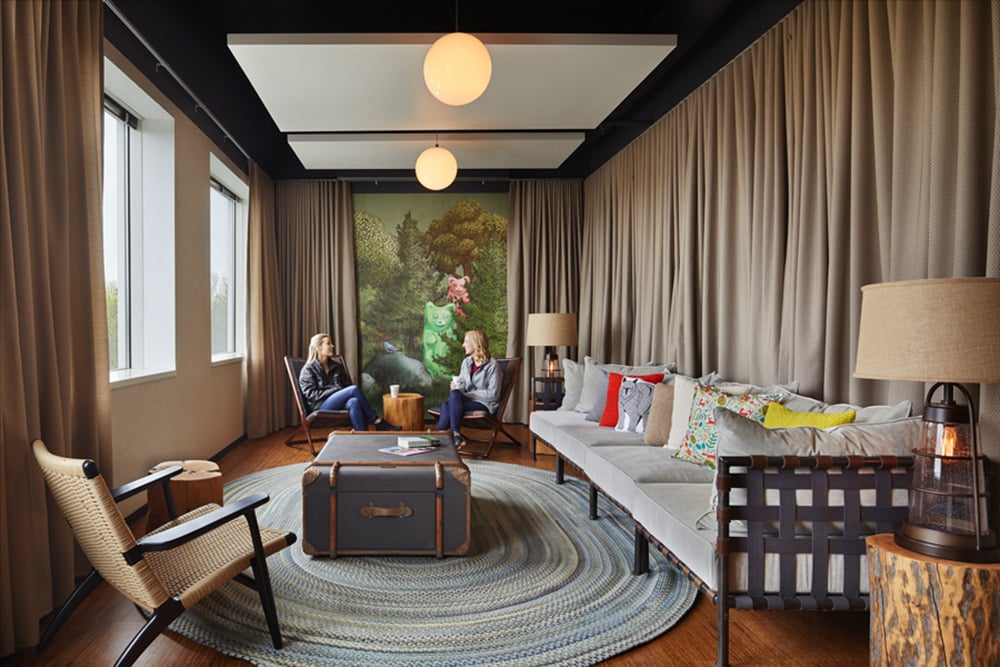
CW: Everyone’s trying to figure out how to bring wellness into the environment for productivity and increased emotional health. The things we design for Microsoft are kind of industry standard but we’re looking at how to approach them in unique ways to create different experiences. We always look for ways to bring in daylight, and when spaces are deeper in the building we’ve looked at circadian lighting and other tools to give users control.
SSS: What solutions is the city developing to benefit the natural environment, which is so connected to our physical and mental health?
HB: Seattle and Portland are great at green storm water infrastructure, which brings the issue of environmentalism into public view. One way to prevent so much runoff from polluting Puget Sound, Elliott Bay, and Lake Washington is by slowing it down and absorbing it. We have built storm water planters and retention ponds that are visible when you walk by. Creating vibrant public grounds with landscaping, seating, good lighting, and activated storefronts are also very important.
VG: My hope is that we can make our spaces equitable, so that livability and walkability are actually accessible to all income and racial groups. We are working on specific policies to advance that idea. Even though there is recognition that diversity might be good for creativity or other purposes, there are still fears around it. Sociologists call it segregation 2.0; lines of exclusion that we’ve felt for years are being reinforced.
The Equitable Development Initiative builds on the city’s partnership with communities so that we don’t use a formulaic approach for every neighborhood. Neighborhoods identify cultural aspects they want to maintain through design guidelines. The city brokered conversations between developers and neighborhoods so that there is a sense of social ownership.
Audience: It seems that society is coming around to understanding that we not only have to take care of the world, but we have to take care of the individual as well. Is the wellness program at Microsoft an incentive for prospective employees, and how does it stand up to the competition?
RP: Yes, we’re competing for the same talent pool, and we are all trying to present Microsoft as a relevant and interesting place to a new generation of people. The expectations that new generations bring certainly affect our outlook.
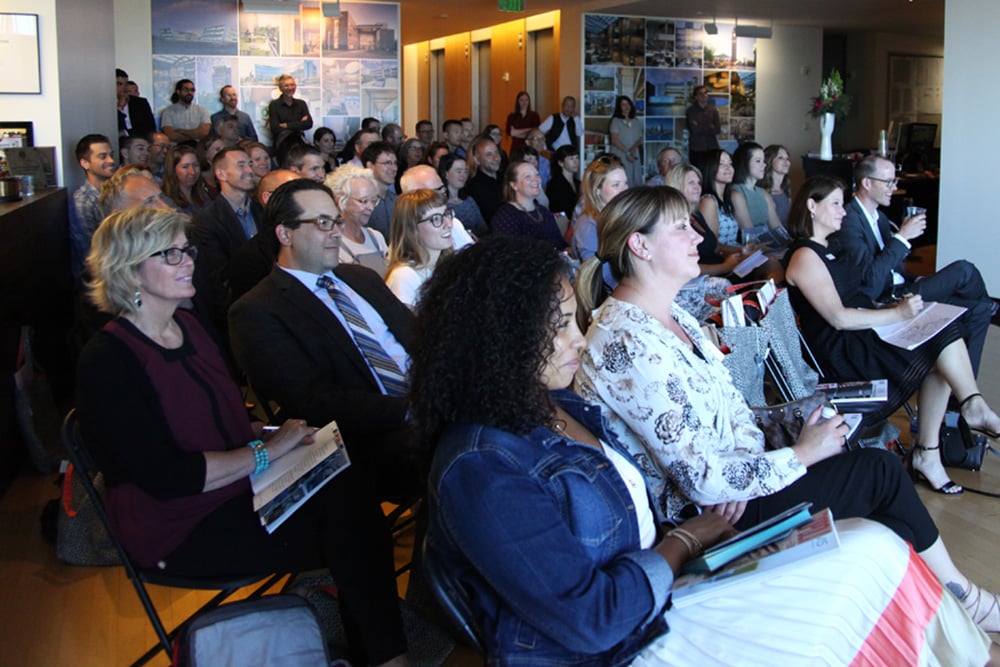

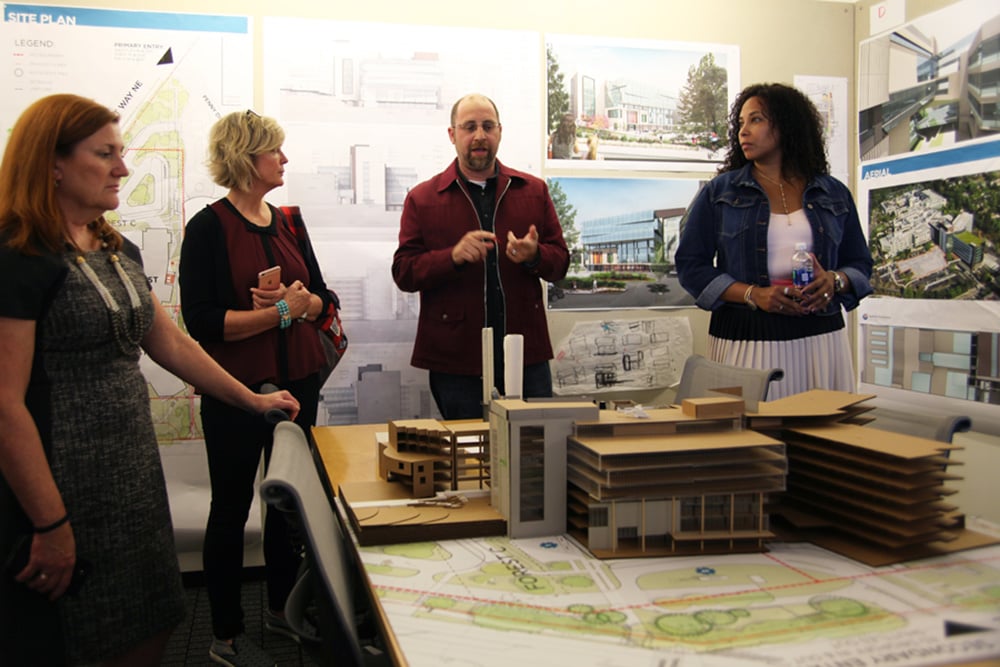
Panelists:
Heidi Bullinga, architect and urban planner, ZGF Architects
Vinita Goyal, urban planner, City of Seattle, Office of Planning and Community Development
Ruta Patil, workplace strategist, Microsoft
Camilla Watson, interior designer, ZGF Architects
Moderator:
Susan S. Szenasy, director of design innovation, Metropolis
The Metropolis Think Tank series is presented in partnership with Corian® Design, DXV/GROHE, Shaw Contract, Staples Business Advantage, Sunbrella Contract Fabrics.





